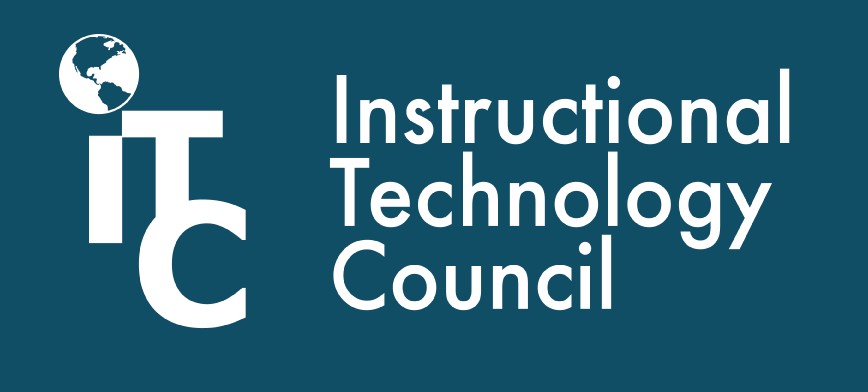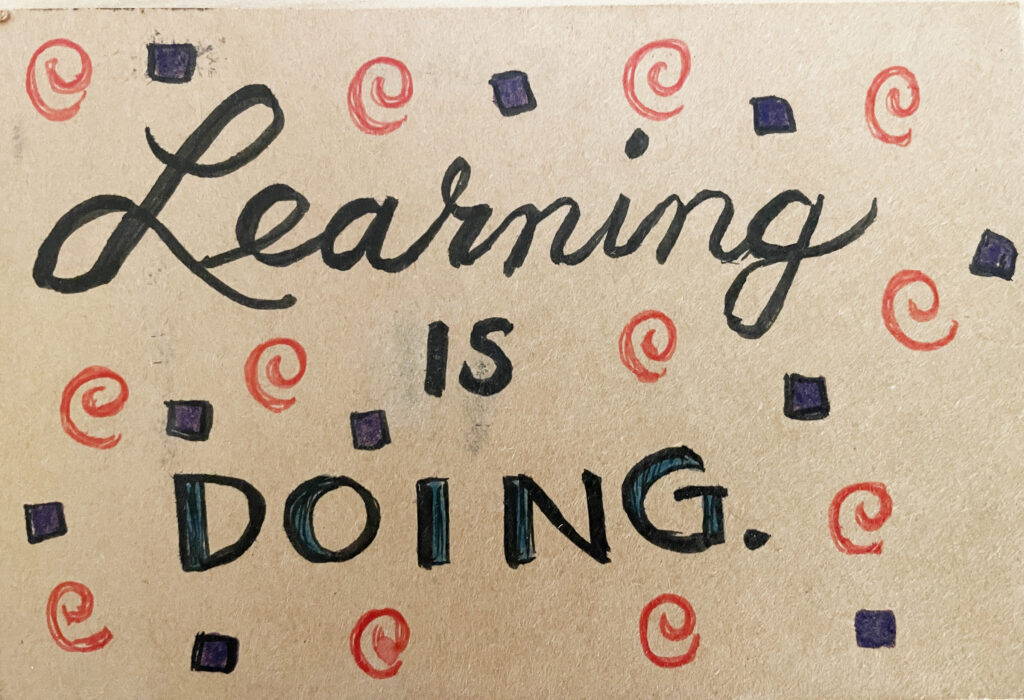A wise friend of mine once said to me, as I was lamenting the fact that I was finding it difficult to find time to read scholarly journals or books about online learning, “Learning is doing.”

A week later, I received a postcard from her in the mail with this exact phrase hand-doodled on the front of the card. I keep it next to my monitor in my home office to remind myself that this applies to my own online learning experience but to the students that my institution serves. Not only do they deserve a rich, online course experience, they expect it.
One of the top stories in mid-2021 was how colleges and universities failed students during their early Covid learning experiences. Students didn’t get what they were paying for — they felt forgotten and disconnected from their classmates and instructors. While there were cases of disengaged students and poor efforts during those early days, many of my online learning management colleagues realized that most of the criticism was directed toward emergency remote learning, not the online courses we had been delivering years before the pandemic. We came out swinging, defending ourselves and the quality of our courses.
This article is part of a biweekly series provided by the Instructional Technology Council, an affiliated council of the American Association of Community Colleges.
What does this have to do with student expectations? The experiences students had with either emergency remote learning — hybrid, hyflex or online learning — during the pandemic have raised the bar for all educators to design quality online learning. Students will not accept the experience that they had in 2020 and 2021, and they will let us know where we fall short.
In recent research with the students at my institution, we explored how students engage with our learning management system and gathered feedback about course design. The themes that emerged were a desire for consistency in course design, timely and consistent feedback, and easy-to-find assignments and grades.
Resources and more
In a study published in the March issue of the Online Learning Journal, the top five learning activities perceived by students to encourage engagement included interactive or practical activities, interaction with peers and educators, linking theory to real-life practice, multiple scaffolded practices, and creativity in content presentation. Learning is doing.

Resources like Quality Matters, SUNY OSCQR and the National Standards for Quality Online Courses existed long before the Covid pandemic providing institutions with the guidance to create quality student learning experiences. In addition to these standards, regular feedback from students throughout the semester about course design and content is an important way to make online course design an iterative process.
At my institution, we created our own Online Course Design Review Guide and adapted our course evaluations to include questions that addressed the criteria in the guide. For example, navigation, regular and substantive interaction, and the ability for students to find resources easily (help desk, library, advising, tutoring, career services, etc.). We also encourage instructors to provide students with a graded item early in the semester so they have an early indication of their grasp of course concepts. A well-designed online course provides students with the scaffolding to be successful, in addition to the support available through academic and non-academic services.
Student satisfaction with services
Expectations for academic and non-academic services have risen, too. Online students may need additional support services, such as tutoring, academic advising and career counseling. On the other side of the global pandemic, there is a better understanding of the wraparound services needed by all students, especially those learning online. Mental health issues are widespread among students, and the majority of students are navigating life beyond the classroom in addition to their studies. Services such as technical support need to be 24/7/365, counseling services should be available via video conferencing, and academic success centers should have flexible scheduling and equal opportunities to participate in study abroad programs or extracurricular activities to help online students with a sense of belonging.
A well-designed online course provides students with the scaffolding to be successful, in addition to the support available through academic and non-academic services.
If colleges can provide flexible learning opportunities and an equal opportunity for support services, students enrolled in online courses can take care of their basic needs while working towards success in their academic pursuits. Navigating online courses shouldn’t be a hall of mirrors experience. Students expect to have the same outcomes as face-to-face classes and the long-term support to help them get to the finish line.





